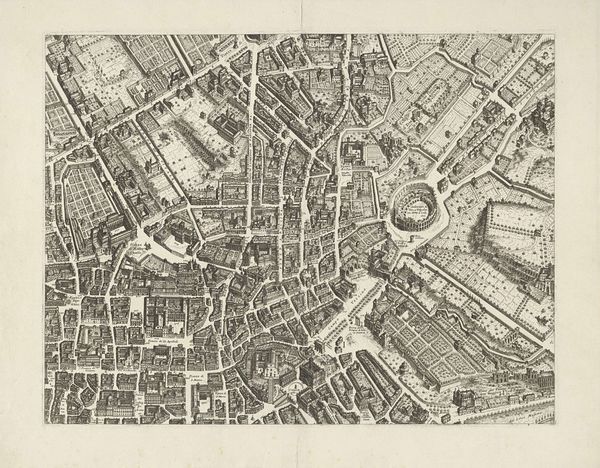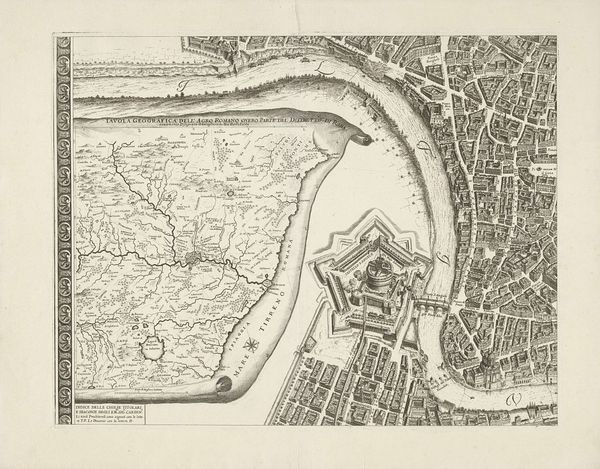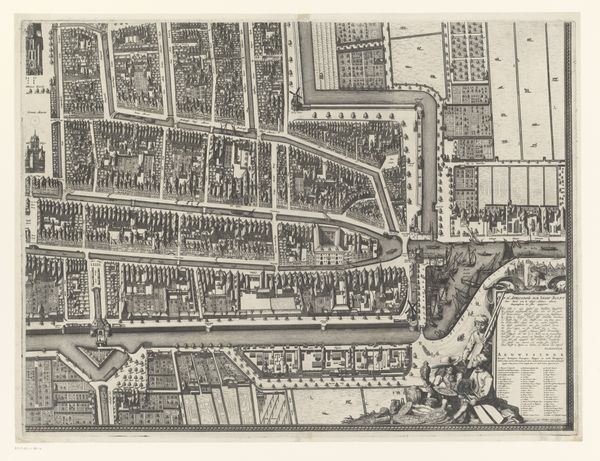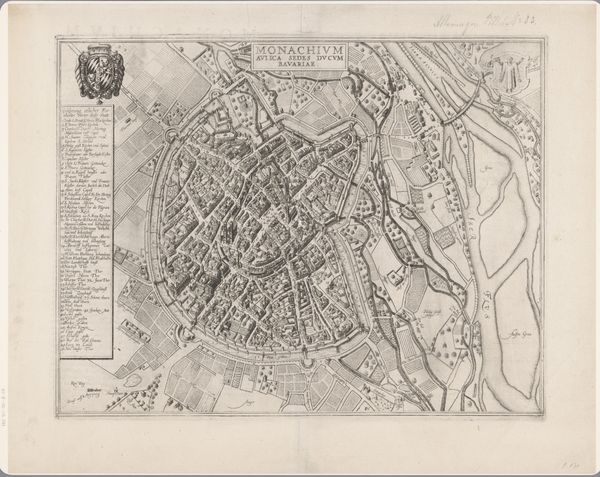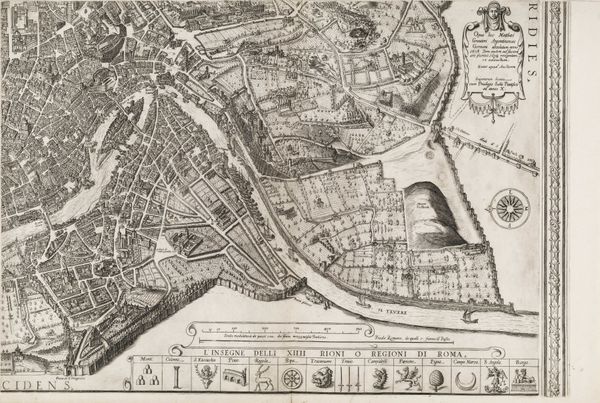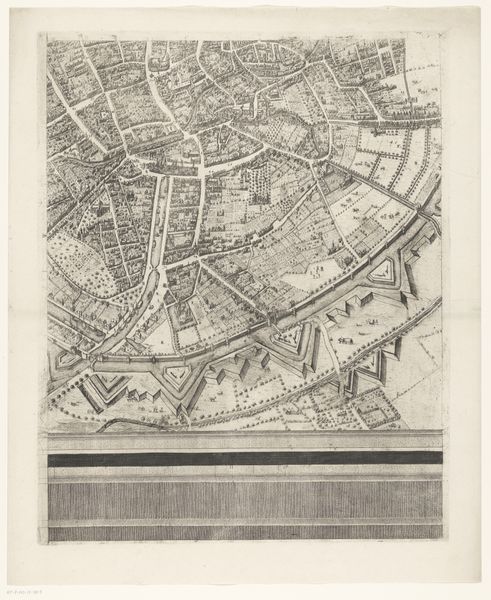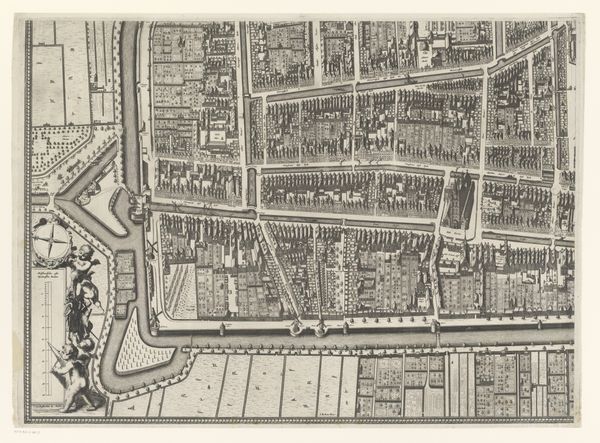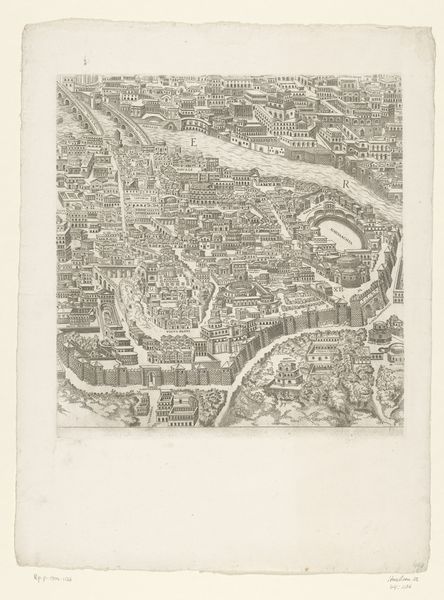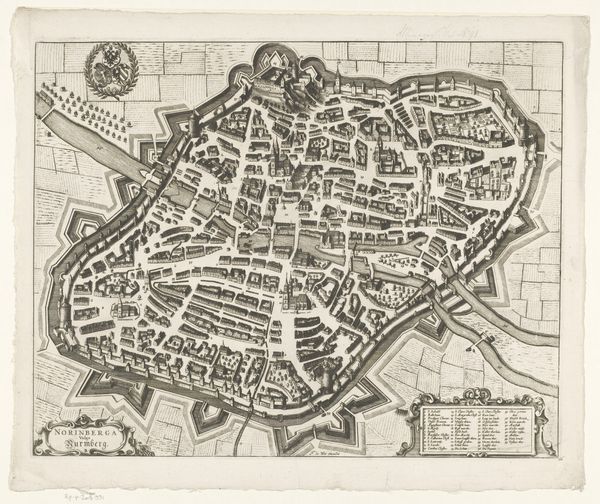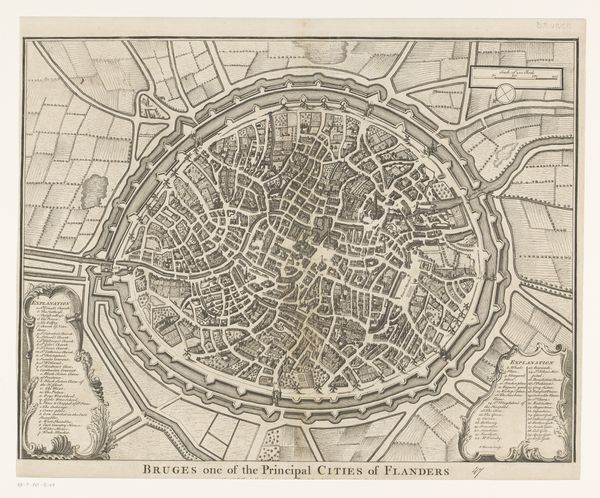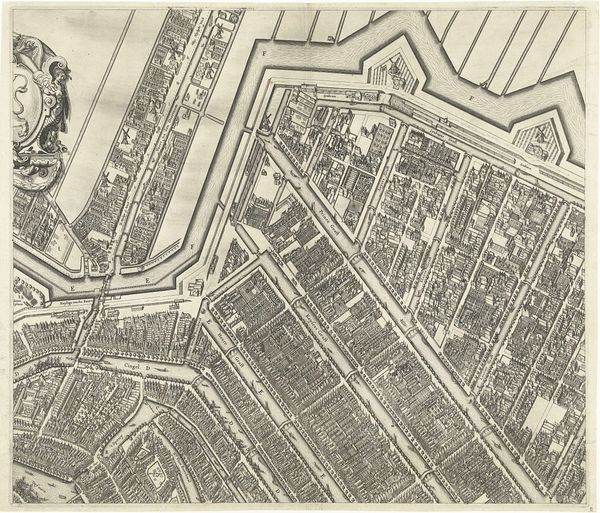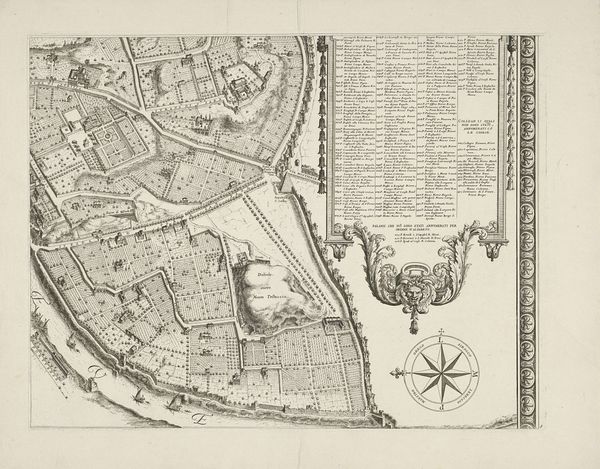
print, engraving
#
baroque
# print
#
cityscape
#
engraving
Dimensions: height 390 mm, width 510 mm
Copyright: Rijks Museum: Open Domain
Curator: This city plan looks like a neural network, doesn’t it? An intense concentration of lines and connections. Editor: It does possess an extraordinary intricacy. We're looking at Giovanni Battista Falda's "Plattegrond van de stad Rome," or "Map of the City of Rome," created in 1676. It’s an engraving, offering a bird's-eye view of the city during the Baroque period. The work is currently held in the Rijksmuseum. Curator: The overwhelming density almost overwhelms the eye, but you notice that Falda balances areas of urban density with open spaces along the Tiber, like little visual rests. This speaks to an era of planned expansion and assertive public imagery. Do you see symbols loaded in plain sight, beyond basic information? Editor: Yes, in a way. The sheer detail suggests a deliberate attempt to showcase Rome's power and magnificence, its burgeoning cultural and political importance. The emphasis on prominent buildings—churches, palaces—projects an image of authority. Rome had already seen nearly two centuries of transformation by powerful families and religious orders. Curator: Indeed, it is no simple cartography; it is an icon. Notice the winding course of the Tiber river as almost alive, acting as the city's bloodline. Riverine systems as civilizational symbols—timeless! Do you feel like the very act of mapping contains symbolic weight in those years? Editor: Unquestionably. Cartography became both science and assertion. In that period, claiming and documenting territories was tied to power. City maps such as this offered a controlled view of what was being governed—or at least aimed to be governed. Falda here translates civic power to printed surface, framing the "Eternal City" with purpose. Curator: Precisely! Now, looking closer—there's a feeling of dynamic development embedded into each mark on the page. As a symbol, this connects viewers with the idea of Baroque Rome being more than static but full of vital changes, and by this time Rome had undergone some transformations. Editor: Definitely, that tension between permanence and change feels embedded here. Even knowing Rome is eternally re-shaping, viewing Falda's image almost takes us back. It captures how Rome's projected symbolic power intertwined in Baroque aesthetics of controlled expansion, projecting power through image, structure, and ink. Thank you. Curator: A most interesting mapping, not merely geographic, but one layered with symbolic and historical depth. Thank you, also.
Comments
No comments
Be the first to comment and join the conversation on the ultimate creative platform.
